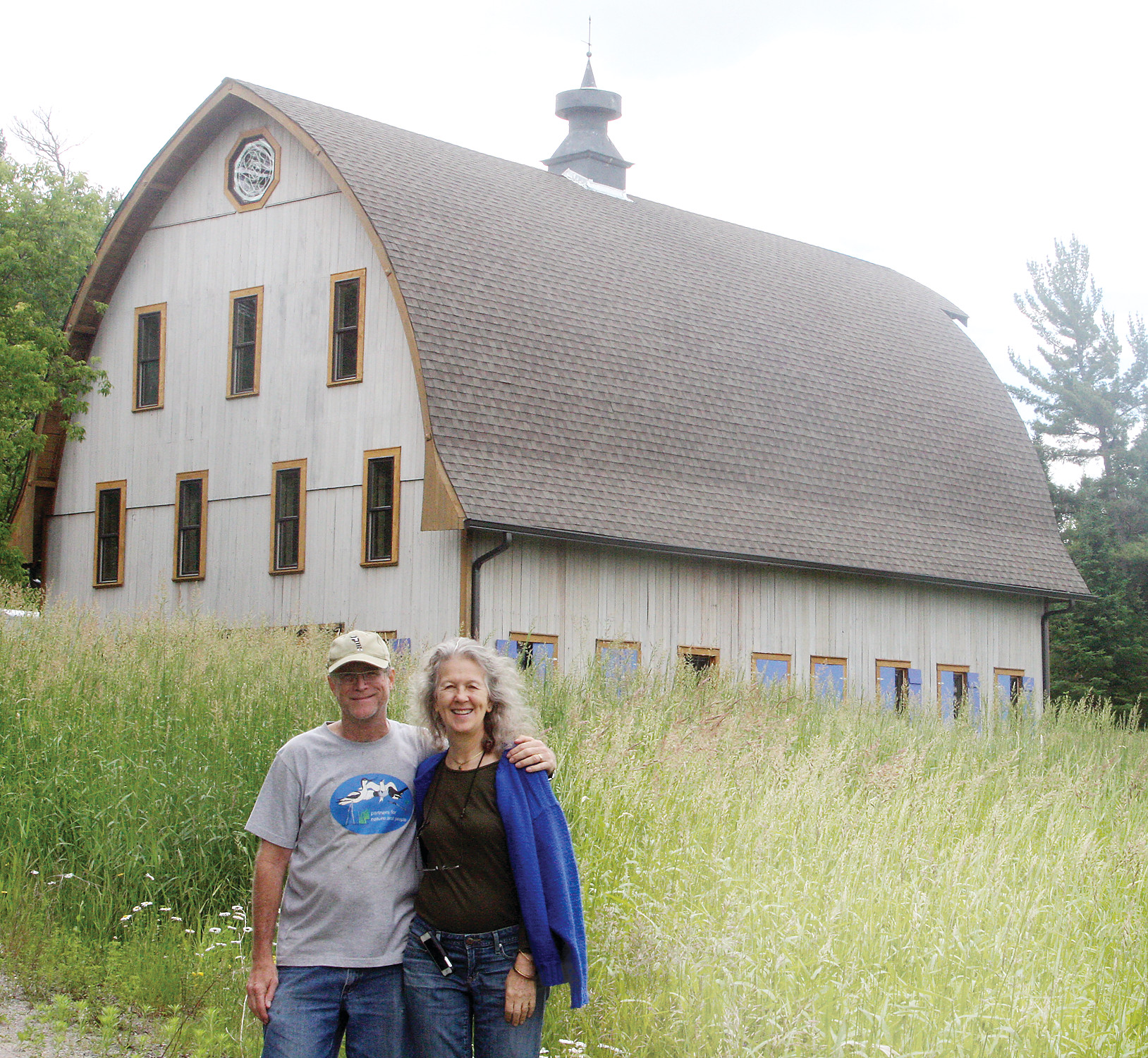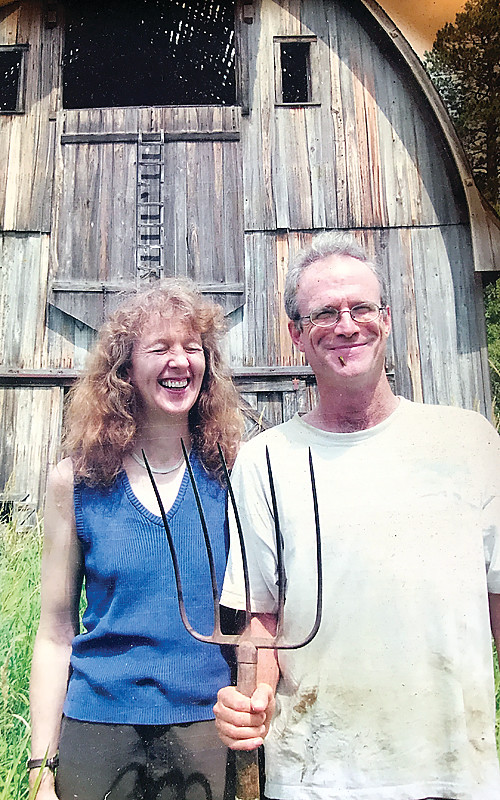Support the Timberjay by making a donation.
Against the odds
Couple building dream home despite battles with the railroad
COOK— This is a story about connection—with the land, family, and memories— and about a battle with large and powerful forces that so often win out over the dreams and expectations of average …
This item is available in full to subscribers.
Attention subscribers
To continue reading, you will need to either log in to your subscriber account, or purchase a new subscription.
If you are a current print subscriber, you can set up a free website account and connect your subscription to it by clicking here.
If you are a digital subscriber with an active, online-only subscription then you already have an account here. Just reset your password if you've not yet logged in to your account on this new site.
Otherwise, click here to view your options for subscribing.
Please log in to continue |
Against the odds
Couple building dream home despite battles with the railroad
COOK— This is a story about connection—with the land, family, and memories— and about a battle with large and powerful forces that so often win out over the dreams and expectations of average people. It begins almost 90 years ago, in the small, mostly–forgotten farming community of Hayley, located just north of Cook.
It was 1928 when Orin Rafsdahl, a small dairy farmer, ordered a new barn from the Sears and Roebuck catalog for his new dairy farm carved from the northern forest. It was called a cyclone barn, a sturdy model built mostly from weather-resistant cypress and designed to withstand high winds. Such barns used to dominate the rural landscape across America, but have largely vanished over the decades, their graceful curves replaced by the hard, utilitarian edges of metal buildings.
Most farmers suffered the same fate, many of them swept from the land by the ravages of the Great Depression. Rafsdahl was one of them. He let his farm go for taxes, but the barn remained and it came with the land when Russell Beatty bought the property some years later, mostly for access to the still surviving hayfields.
And that’s how Rafsdahl’s barn came to be a source of joy in Sharon Beatty’s life. Sharon was Russell’s daughter and she remembers many hours spent playing in its haylofts, often dropping into deep piles of loose hay from a rope swing attached to the barn’s high ceiling.
Over the years, many other local kids found their way to the barn as well. Eventually, someone hung a basketball hoop on one wall and it became a popular spot for local teenagers to shoot hoops and hang out. Sharon believes that’s one reason the old barn survived both the ravages of time and a young person’s careless match. “This barn is deeply engrained in local lore,” said Sharon. “There’s a respect for it that probably helped keep it in such good condition.”
Despite fond memories of her childhood, Sharon eventually left home, like so many young people from rural America. She attended the University of Minnesota, then joined the Peace Corps, which led to a career in international development. She’s currently based in Yemen, where she monitors British aid programs.
But even as she lived and worked far away, Sharon always came home in the summer, to visit her mother Delphine, and her two brothers, Jim and Mark, both of whom live in the Twin Cities. “I love the farm,” said Sharon for whom the annual homecoming was an important part of her life.
Eventually, one year, she returned home with her new husband, David Stanton, a teacher she met while living and working in Yemen.
And over the years to come, David came to share Sharon’s affinity for the farm and the northern landscape. About 15 years ago, well before her death, Delphine bequeathed much of the rural property that made up the farm to her children. For Sharon, there was little question about which parcel she would request— it was the 80 acres that included Rafsdahl’s old barn. Before the title transfer was even completed, Sharon had made the conscious decision that the building needed to be saved— and so began her and David’s undertaking, made all the more epic by their coming battles with the power of the railroad.
The rail line, now owned and operated by Canadian National, has run through Cook for a century, and it also featured heavily in Sharon Beatty’s life story. From her childhood, the memories are mostly pleasant ones. When she was young, Hayley was a whistle stop on the line, which included a passenger car for many years. Sharon would board the train regularly to make her catechism class in Cook. Their days on the farm— located on the east side of the tracks— were punctuated by the comings and goings of the trains.
Those were simpler times, of course, and much has changed since, as Sharon and David learned in 2005 when they hired a contractor to re-shingle the barn’s massive roof. At the time, the barn’s roof was full of holes and Sharon and David knew that without staunching the flow of water into the old building, its days would be numbered. They were also, by that time, thinking that it had the potential to be more than a barn. While they had lived in many far-flung places and could have easily chosen any of them as a place to call home, in the end, the couple decided that the rural farmstead was the place they truly wanted to be. “At one point, Sharon said, ‘Don’t you think this would make a great house?’” recalls David. “I said yes, and I’ve devoted every summer to it since.”
They soon got a taste of what they were in for. The barn’s old access road utilized a rail crossing that hadn’t been used in decades and when the railroad discovered the roofers that Sharon and David had hired were driving their supplies across the tracks at the spot, they blocked the crossing immediately, denying Sharon and David the only road access to their property.
But were there’s a will there’s a way, and for five years, from 2005 to 2011, the couple hauled tons of lumber, plywood, appliances and even the water Sharon used to power wash the barn’s old siding, by hand and cart. “I hauled 1,500 square feet of OSB on my back,” recalls David.
There were more run-ins with the railroad. For years they had argued, with help from an attorney, that the railroad should pay the cost of installing a new driveway to their building site since it was Canadian National that denied them access to the original road and crossing. The railroad fought that request and ultimately never contributed to the project.
Yet it turns out the biggest fight was yet to come. Earlier this year, the railroad informed them by letter that they would be using eminent domain to acquire some of their property on the east side of the tracks, directly opposite the small meadow where their soon-to-be-finished home sits. The railroad is proposing to reroute a portion of Wood Rd., to address public concerns over a rail crossing frequently blocked by trains parked at the siding the railroad built some years earlier. The new road would encroach on the meadow and remove trees that help shelter the couple’s home from the sight and sound of the trains on the tracks.
The letter stunned Sharon and David, who, after more than a decade of incredible effort to build their dream home saw the latest development as a devastating blow— and yet another setback care of the railroad. The couple are hoping to move permanently to their new home next year. They plan to live on the barn’s upper levels, and hope to operate a small bed-and-breakfast from the building’s main floor, but now say the railroad’s latest action may quash those plans, by undermining the tranquility of the setting. The loss of tree cover is one issue, but the couple is equally concerned that once the new road is in place, which will eliminate the need for a crossing, that the railroad will use the siding to park even more trains and rail cars than before. “We’re worried they’ll be turning this beautiful pastoral setting into an industrial site,” said Sharon.
Sharon and David acknowledge that the problems at the current crossing are real. The railroad currently parks trains on the siding for hours at a time, and when it does, it prevents the residents living on the dead end road north of the crossing from getting out. “One neighbor nearly got fired because he couldn’t get to work,” said Sharon, who notes that the railroad has, at times, blocked the crossing for as long as 15 hours. “They block it with impunity,” said Sharon.
But Sharon and David argue that it’s a problem created solely by Canadian National, and they shouldn’t have to sacrifice yet again for the railroad. Rather than rerouting the road onto their property, they’d like to see Canadian National move the siding a mile or two to the south, which would resolve the access concerns of residents along Wood and Winnifred roads without affecting any other road crossings. “They chose the option that’s the cheapest for the railroad, but it’s the one that impacts us the most,” said Sharon.
Had the couple had a voice earlier in the decision-making process, their views might have been considered. But neither the railroad nor St. Louis County, which recently approved the road reroute, ever contacted affected private landowners until the decision was already made.
“There was never any public discussion. We never heard about it until they wanted access to survey for the road,” said Sharon. “That’s too late in the process to give us any good options, other than fighting in court.”
Sharon and David say Canadian National won’t consider their suggestions for resolving the situation. “They dismiss everything we’ve suggested,” she said.
After a decade of planning, building, and anticipating sinking deep roots in the Little Fork Valley clay, the latest development has left Sharon and David discouraged, and wondering if the years of effort were worth it. For Sharon, it was the memories of her childhood, and family ties that bound her to the North Country. But it is no longer the same, she says.
“I have nice memories of the railroad as a child, but there are no good memories in the past 15 years,” said Sharon. “The railroad’s been our biggest obstacle.”









